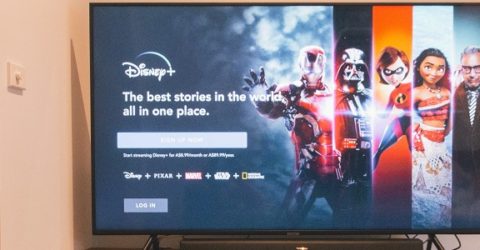How do smart TVs work?
With 217 million people expected to purchase a new television in 2022, understanding how smart TVs work is crucial if you’ve never owned one

If you’re unfamiliar with the concept, the term ‘smart TVs’ could ring all sorts of alarm bells.
Does it know whether you’re looking at it? Can it listen to your voice? Will it quietly drop Channel 5 from its electronic programme guide on the basis of insufficient quality?
The answer to all those questions is no – though modern TVs often track which channels are being watched, often reporting back to the manufacturer as frequently as once per second.
For now at least, smart TVs are aimed at giving consumers additional services through your home broadband connection – streaming content, software updates, and so forth.
Here’s what you need to know.
Smarty pants
Just as the term ‘smart device’ now applies to any consumer electronics device sporting an internet connection, a smart TV must be internet-enabled by definition.
While most offer an Ethernet socket to hardwire into your home broadband router via a cable, in practice, the vast majority will connect wirelessly using WiFi.
This is typically done immediately after unboxing, as the TV is being setup.
The complexity of this process will come as a shock to anyone who remembers getting a ready-to-watch telly delivered by Radio Rentals.
You’ll be asked to confirm your language and home country, choose input platforms (such as a Sky Q box connected via HDMI) and even specify picture/sound/recording options.
Many smart televisions incorporate hard disc drives, enabling you to record content and view it whenever you want.
Being internet connected means they can update pre-installed or newly released software – user interfaces, third-party apps, and so forth.
Smart televisions can download the next episode in a series as you watch the previous one, delivering a seamless viewing experience.
Bear in mind that TVs are voracious consumers of user data, combining this with information harvested from your phone and social media profiles to select which TV ads to broadcast on your device.
Can I see the menu, please?
Smart TV sets use menu systems to navigate their various functionalities. Manufacturers develop their own proprietary interfaces, along similar lines but with notable distinctions.
Turn on a modern LG TV without any input feeds, and it’ll display a Renaissance-style painting while asking if you’ve forgotten to turn on a set top box.
Once it receives a broadcast input (from an aerial, set top box or other source), a horizontally-scrolling menu appears at the bottom of the screen.
This gives you access to everything from the ubiquitous Settings menu to individual apps.
This is another area where smart TVs excel. They generally have all the major video streaming services pre-installed, ready for you to log in and watch on demand.
However, there’s no industry standard for this. Some units offer BritBox and Disney+, while others focus on the ‘big two’ of Netflix and Amazon Prime Video.
Many modern TV sets have dedicated Netflix buttons on their remote controls, providing a one-tap shortcut to the UK’s biggest streaming service.
How do I control a smart TV?
Options vary.
Some systems bring up a cursor when the remote control is pointed at the screen, allowing you to move around with gestures and click a button to choose whatever is highlighted.
Others have scroll wheels or four-directional joypads allowing you to move left and right, up and down through various menus and sub-menus.
(These can be confusing and even illogical if you’re not the sort of person who reads instruction manuals from cover to cover).
Some televisions support voice inputs, though these are notoriously glitchy if you have a strong accent.
One thing you won’t find on a smart TV is any physical buttons on the set itself – not even an on/off button.
That means losing the TV remote represents an insurmountable obstacle.
If the TV’s software encounters a fatal error (which is rare but not unheard of) and the remote control stops working, your only option is to unplug it at the wall, count to 30 and restart it.
Rebooting could take several minutes, given the complexity of the software required to run a modern smart TV.






